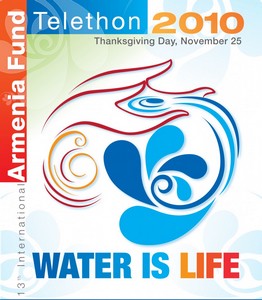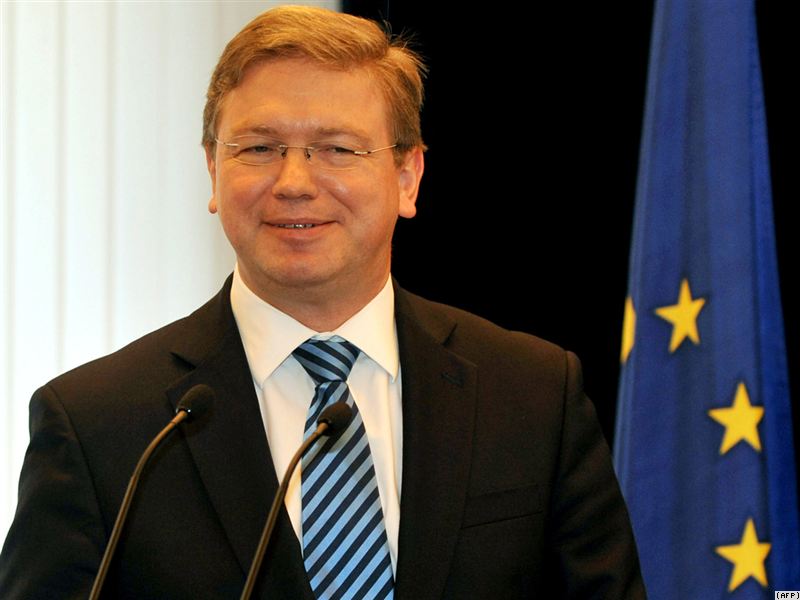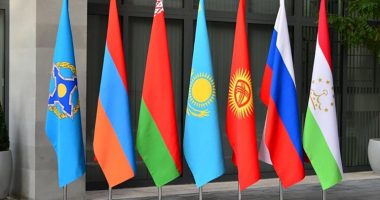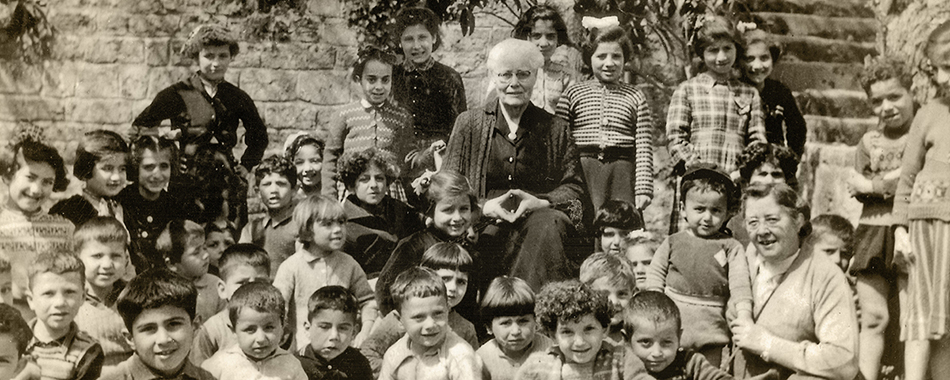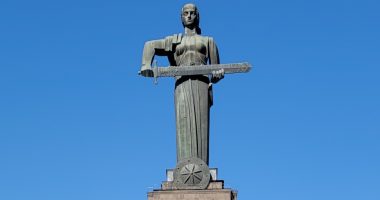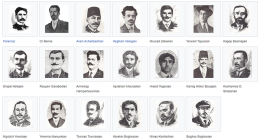“To donate or not to donate?” That is the question millions of Armenians have been asking themselves on every Thanksgiving since 1992 before making a pledge to “Hayastan” All-Armenian Fund. Despite their willingness to lend a helping hand, numerous contributors tend to think twice before making a donation, due to multiple reports and evidence of corruption linked to the activities of the Fund. More and more people vow not to donate.
A few days before the 2010 telethon, Horizon TV aired an interview with Sarkis Kotanjian, Executive Director of “Hayastan” All-Armenian Fund U.S. Western Region, who referred to the reports of corruption as myths and tried to dispel them. Below, each of the myths is presented exactly as Mr. Kotanjian worded them, along with his interpretations, which are termed here as “busting.” The alternative interpretations of the core issues are presented as “Unbusting.”
MYTH #1: People are trying to politicize “Hayastan” All-Armenian Fund.
BUSTING: “Hayastan” All-Armenian Fund does not interfere with any issue. Even last year, when there were problems connected to the protocols, “Hayastan” All-Armenian Fund was the only, was among very few charitable organizations that said: “It doesn’t concern us. We are not within the political field, we do charity, let everyone mind their own business.”
UNBUSTING: It is praiseworthy that All-Armenian Fund stays away from politics, minding its own business. However, this strategy doesn’t prevent politics to pry into the Fund’s business. The question is not whether “Hayastan” All-Armenian Fund does not interfere with politics, but whether it would dare to do so, given the presence of heavy-weight state officials on its Board of Trustees.
This organization became politicized the moment Manushak Petrosyan, an old and loyal friend of Levon Ter-Petrosyan, was appointed the first Executive Director in 1992. As a result of the Fund’s growing subordination to the authorities, funding of projects by Diaspora Armenians became more and more dependent on the political decisions made by the country’s president.
The politicization of “Hayastan” All-Armenian fund became obvious when ARF boycotted the activities of the fund after the authorities began persecuting its party members in Armenia in 1997. It became especially obvious when Manushak Petrosyan’s resignation immediately followed that of Levon Ter-Petrosyan’s in 1998, amid scandals in the press about the riches she had amassed within 6 years in office, the luxurious villa she had managed to build, as well as about the ownership of the Pioneer Bar, Rio shoe store and villas by certain members of the fund administration.
Raffi Hovhannisian is, perhaps, the only former executive director who publicly admitted that the fund was a politicized structure. “Of course, there was a certain amount of politicization. By resigning, Manushak Petrosyan, the former executive director, fed all the existing doubts that the fund is indeed a politicized organization pleasing the authorities. It is that politicization that had a negative impact on our people’s perception of the fund both in Armenia, Artsakh and the Diaspora,” he said in an interview to Azg Daily in 1999. That same year Aravot Daily wrote: “In the past years, the Armenian Diaspora was donating money to Armenia through various funds. Most of the transactions were carried out through “Hayastan” All-Armenian Fund. Some funds try to stay as far away from politics as they can. But they don’t always succeed. A few years ago the Greek-Armenian community had raised $300,000 for donating to Armenia. The donation was being constantly postponed due to political reasons. Only in autumn of 1998 did the representatives visit the homeland and handed the bank note to Armenian President Robert Kocharyan.” Little did they know with whom they were entrusting their money.
According to the press release for the 18th session of the Board of Trustees on May 18, 2009, Serzh Sargsyan talked about the efforts directed at the normalization of Armenian-Turkish relations, as well as the situation around the settlement of the Artsakh conflict. “The discussion of political issues at a “Hayastan” All-Armenian Fund session is yet another innovation,” concludes Hraparak.
MYTH #2: On TV or internet we read… They talk about things that do not reflect the reality. For example, as though “Hayastan” All-Armenian Fund is a governmental fund and is ruled by the authorities of the Republic of Armenia.
BUSTING: It is not so. We are a public organization, charitable, non-government. Although state representatives of both Armenia and Karabakh are included in our Board of Trustees, I must emphasize that they are a minority. There are a total of 38 trustees, and only 13 of them represent the state. The voting is based on simple majority. That is to say, even if all the state representatives vote the same way, that decision will not pass. And this has been done with the purpose of making sure all the decisions are balanced. There are different kinds of decisions, like what the purpose of the fundraising is going to be, how the funds are going to be spent.
UNBUSTING: Those who say “Hayastan” All-Armenian Fund is a governmental fund don’t necessarily refer to the de jure status of the organization. They rather imply its subordination to the authorities of the Republic of Armenia.
The number of Government representatives, 13, is not accurate. Mr. Kotanjian must have omitted world-renowned singer Charles Aznavour who was appointed ambassador of Armenia to Switzerland on February 12, 2009. A couple of months later Serzh Sargsyan signed an order making Aznavour Armenia’s permanent delegate to the United Nations at Geneva. The ratio, thus far, is 14 vs. 24.
If balancing the decision-making has been the Fund’s intention, it hasn’t been achieved since 14 and 24 obviously aren’t equal. This numerical misbalance, on the other hand, indicates that the fund admits the existence of such a crucial factor as the voting power of the authorities. “Hayastan” All-Armenian Fund has, nevertheless, underestimated the true might of that voting power. All the presidents of the Board of Trustees—Levon Ter-Petrosyan, Robert Kocharyan and Serzh Sargsyan—have on numerous occasions proved to handle even tougher misbalances during the Armenian presidential elections from 1996 to 2008. In those tougher cases, the difference wasn’t a matter of merely ten votes, but rather tens of thousands, which were falsified in favor of each of them. In fact, the voting power of the state representatives in the Board of Trustees has been so tremendous that none of those 24 members—the overwhelming majority—has ever dared to publicly voice their concern over massive election fraud.
In 1999, 2000 and 2001, the Armenian press raised concerns over the fact that, among others, some of the most important members of the Board of Trustees—Charles Aznavour, Vatche Manoukian, Hrayr Hovnanian, Louise Simone Manoogian—chose not to participate in the 8th, 9th and 10th sessions of the Board of Trustees of “Hayastan” All-Armenian Fund. The official excuse was that they were busy. It looks like withdrawal has been their preferred method of expressing disapproval to the authorities.
A generic note about the annual session of the Fund published in Hayots Ashkharh Daily, May 8, 2001, indicates the impact of the country’s president on decision-making within the Fund: “In President Robert Kocharyan’s evaluation, “Hayastan” All-Armenian Fund in the year 2000 has worked within the framework of the decisions made by him, and the projects can generally be considered successful.”
When speaking about the balance of power, Mr. Kotanjian didn’t mention the existence of such a superstructure within the Board of Trustees, where the overwhelming majority are state figures. Below is a list of the members of the Presidium of the Board of Trustees (courtesy of Sarkis Kotanjian):
1. Serzh Sargsyan – President of the Republic of Armenia, President of the Board of Trustees of the Fund
2. Gagik Harutunyan – Head of the Constitutional Court of the Republic of Armenia, Vice Chair of the Board of Trustees
3. Arkady Ghukasyan – Special envoy of the President of Armenia, Vice Chairman of the Board of Trustees
4. Hovik Abrahamyan – Speaker of the National Assembly of the Republic of Armenia
5. Tigran Sargsyan – Prime Minister of the Republic of Armenia
6. Bako Sahakyan – President of Nagorno-Karabakh Republic
7. Edvard Nalbandian – Minister of Foreign Affairs of the Republic of Armenia
8. H.H. Garegin II – Catholicos of All Armenians
9. Hirair Hovnanian – Armenian Assembly of America
10. Petros Terzian – France
11. Albert Boyajian – USA
12. Samvel Karapetyan – Russia
The weight of the majority of the authorities in the presidium is strategically complemented with the presence of two Vice-Chairmen of the Board of Trustees. Both of them represent the Government—Gagik Harutiunyan, Head of the Constitutional Court (who used to be the close ally of Manushak Petrosyan, the notorious former Executive Director of the Fund) and Arkady Ghukasyan, former President of Artsakh, currently ambassador-at-large or special envoy of the Republic of Armenia. Arkady Ghukasyan became the second Vice-Chairman as a result of an amendment to the Fund’s charter, which introduced a new office within the Presidium of the Board of Trustees. According to that amendment, the only difference between the two offices of the Vice-Chairman is that one of them is ex officio (Gagik Harutiunyan).
That same day Louise Simone Manoogian gave up her membership in the Presidium of the Board of Trustees and received the title of Honorary Member of the Board of Trustees.
Technically she was replaced by Samvel Karapetyan, the multi-millionaire owner of Tashir group of companies in Russia, who is the brother of Karen Karapetyan, the head of Serzh Sargsyan’s Administration. Manoogian’s exit and Karapetyan’s admission into the Presidium of the Board of Trustees indicated that 7 officials vs. 5 non-officials is only the de jure picture. Samvel Karapetyan effectively altered the de facto ratio in favor of the authorities: 8 vs. 4.
According to Clause 45a of Chapter 5 (Governing Bodies of the Fund) of the Fund’s charter, the Presidium of the Board of Trustees appoints the Executive Director, Deputy Directors and presents them for final approval by the Board.
Here’s one more factor speaking volumes about the correlation of the Fund and the Government—“Hayastan” All-Armenian Fund is located at Government Building #3 Yerevan, Armenia 0010.
MYTH #3: There is another myth that the money raised by the Armenia All-Armenian Fund gets into the hands of the Government.
BUSTING: It is not so, it is a misunderstanding. “Hayastan” All-Armenian Fund has a few dozens of bank accounts that belong to “Hayastan” All-Armenian Fund. These dozens of bank accounts are located in different parts of the world. As you know, there are twenty local affiliates of “Hayastan” All-Armenian Fund in different countries of the world. Not a single dollar, a cent, a dram, a euro ever appears in the Governmental accounts (կառավարական հաշիվներ). It is controlled by “Hayastan” All-Armenian Fund, it is spent by “Hayastan” All-Armenian Fund, and the annual report is made available to the public in an edition such as this one (shows it), which includes all of our financial information—how the money was spent, how much there was and so on and so forth. This financial information, I should add, is checked, audited by Grant Thornton, which is a large international company and has its representation in Armenia.
UNBUSTING: It may be true that not a single dollar, a cent, a dram, a euro ever appears in the governmental accounts. However, the main concern among the donors is not the governmental accounts (which implies the budget), but rather the personal accounts of the Government officials. It is satisfactory that all the donations are kept in the numerous bank accounts of “Hayastan” All-Armenian Fund, but the question is where the money streams from there. There are numerous ways the authorities can channel the donations for their personal benefit. These are a few:
- Ordering the Executive Director to deposit certain amounts of donated money to bank accounts, which do not belong to the Fund.
- Making sure construction contracts are signed with construction companies owned by officials or people close to them.
- Eventual privatization of a building constructed by means of “Hayastan” All-Armenian Fund.
- Building improvements on lands owned by a state official or the people close to them.
After Manushak Petrosyan left “Hayastan” All-Armenian Fund, Robert Kocharyan offered the position to Raffi Hovannisian, former Minister of Foreign Affairs of the Republic of Armenia, in 1998. Raffi accepted the offer at a time when the relations between the Diaspora and Armenia had cooled over the scandalous findings about former Executive Director Manushak Petrosyan’s wealth, as well as the power shift.
The new Executive Director was unhappy with his predecessor’s work; he made some staffing changes and made sure to keep her away from the Fund and its projects. Aravot Daily published an article with a title “The Former Are Not Allowed” in 1998: “By the order of Executive Director Raffi Hovannisianr, no invitations had been sent to the former and those of the current employees who had worked with Manushak Petrosyan to attend the opening of a segment of the Goris-Lachin-Stepanakert road built by means of “Hayastan” All-Armenian Fund. Manushak Petrosyan hadn’t received an invitation either.”
Some of the employees left the Fund on their own, unhappy with Raffi’s style of work and strategies. Among them, Tigran Paskevichyan, former head of the Public Relations Department, was quoted in 1998 by Aravot Daily as saying: “During a trip to Karabagh, Raffi Hovannisian had made such a statement in an interview to Karabagh TV: ‘We must create, save and improve the Fund.’ <…> After that I understood that I cannot participate in the creation of something which was created a long time ago, in saving something that doesn’t need to be saved, and I wasn’t seeing ways of improvement with Raffi Hovannisian.”
Having served the Fund for as few as six months, Raffi Hovannisian quit in the fall of 1998. Three consecutive short-lived appointments—Foreign Minister 1991-1992, Head of the Department of Information and Publications (40 days in 1998), Executive Director of “Hayastan” All-Armenian Fund (6 months in 1998)—were a heavy blow on Raffi Hovannisian’s reputation as a leader among the Armenian population.
Over a decade later, Raffi’s son, Garin Hovannisian, wrote in his recent book Family of Shadows something his father had preferred not to share with the curious journalists during his time in office and following his resignation. The excerpt below shows the simple mechanism of “indirect depositing,” at least when Raffi Hovannisian was the Executive Director of “Hayastan” All-Armenian Fund:
His first problem was that, through the winter of Armenia’s political transformation, the diaspora’s confidence in the republic had frozen, and along with the confidence millions of dollars in the international bank accounts of the All-Armenian Fund. It was Raffi’s first goal and immediate success to effect a national defrosting and to schedule major fund-raisers in the diaspora. These fund-raisers had not yet taken place, however, when Soviet symptoms reappeared. This time the requests for wire transfers—$50,000 to this account, $100,000 to the other—were coming from the presidential office. This time there was no higher authority to which he could appeal.
<…> Raffi began to fear that some sinister financial scandal was being planned for him. And still Armenouhi said: “Hang in there and work.”
But now Raffi had changed. His response astounded Armenouhi. “Guzes kogheru hed ashkhadink?” he said. “Do you want us to work with thieves?” (Hovannisian, Garin, Family of Shadows, HarperCollins: New York, 2010, p. 198)
This admirable honesty, however, doesn’t answer why this political figure had to hide these crucial details, especially when they obviously paint a bad picture of his political opponents.
“Sure, I hope that you will see that stylistically the book reads more like fiction. However, trust me, I have done research as a journalist, as a historian, and everything in the book is a reality,” said Garin Hovannisian at his book signing event at Barnes & Nobel on September 21, 2010 in an interview to Horizon TV based in Los Angeles.
On February 10, 2010, Zhamanak published an interesting article titled “The Worst Traditions Continue” about the construction companies that have traditionally been winning the tenders despite their bad performance in the past. Kristine Khanumyan, the author of the article, singles out Vrezh, Karavan and Chanshin construction companies. Vrezh belongs to Karen Hakobyan, the brother of oligarch Samvel Hakobyan, MP of the National Assembly of Artsakh; Karavan belongs to Hakob Hakobyan, Samvel Babayan’s former ally who has succeeded in gaining the trust of the incumbent authorities; Chanshin is owned by Roles Aghajanyan, another close friend of the Artsakh officials—this is as detailed as she gets about Aghajanyan.
“These three people have been taking turns winning all the tenders announced for the construction of the North-South Highway, putting the asphalt, the quality of which had eventually upset even the MPs of Artsakh National Assembly,” Kristine writes. The issues with the quality of their work and other abuses will be covered in the sequel of this article. At this point, I’d like to jump to the alarm Kristine Khanumyan’s article sounds, which is, despite poor quality of work and numerous abuses, one of these companies, Karavan, once again won the tender for the repair works of Aram Manukyan and Garegin Nzhdeh Streets of Shushi, Artsakh, in December 2009.
About a year and a half after her scandalous resignation, Manushak Petrosyan told Aravot Daily that after leaving “Hayastan” All-Armenian Fund, she made a decision to do construction. “With that purpose, together with a group of like-minded people, she established Spectrum, a company specializing in construction,” writes the newspaper and then quotes her as saying: “Today we have different projects in progress. We are doing construction work in the disaster zone—Gyumri, Stepanavan.”
One of those construction projects—Children’s Art Center of Ani District in Gyumri—was granted to Spectrum, Ani and Kamas by none other than “Hayastan” All-Armenian Fund (see details here). Although the official website doesn’t provide dates of the construction project, however, thanks to the above-mentioned article in Aravot, the $242,903.23 deal appears to have been cut by Raffi Hovannisian’s successor, Vahan Ter-Ghevondian.
Manushak Petrosyan was not prosecuted following her resignation, which is not very surprising since the power shift in 1998 didn’t cause her partner and close ally, Gagik Harutiunyan, to lose his office as the Head of the Constitutional Court of the Republic of Armenia, therefore retaining his membership on the Board of Trustees ex officio. Moreover, Mrs. Petrosyan’s construction company seemed to be prospering despite her public disgrace.
Later on, she reappeared on the political platform as a member of Levon Ter-Petrosyan’s election campaign in 2008. Today Manushak Petrosyan is back in her element—she distributes aid donated for political prisoners in Armenia. And this has been creating tensions within the ranks of the Armenian National Congress, those who still remember her deeds as the Executive Director of “Hayastan” All-Armenian Fund. Who knows what offices await her in case of Levon Ter-Petrosyan’s return to presidency?
On July 07, 2007, Hayeli Club, where Armenian public figures debate about social, economic and political issues, hosted Artsvik Minasyan, ARF member, former Government official, and Armen Martirosyan, Heritage Party member. The latter touched upon an exemplary incident that reveals a mechanism of a shady transaction between the Government officials and “Hayastan” All-Armenian Fund:
“Three days ago, thanks to the active interference of the MPs from the Heritage Party, the brutal destruction of a green territory at the intersection of Pushkin and Yekmalyan streets was prevented. As a matter of fact, this was a case of land allocation from the Government to the All-Armenian Fund. The latter had afterwards sold it to a physical entity. This is prohibited as it wasn’t carried out within the framework of the law.” (see details here).
This seems to be a rare incident of scheme being intercepted. The formula is as follows: first of all All-Armenian Fund is asked to build or renovate a certain building; then, upon completion, a Government official or his friend/family member/business partner privatizes it.
Smbat Hakobyan, chief trainer of Armenia’s sailing sports, in an interview to Aravot Daily on June 25, 2007 said: “A Union of Sailing has opened in Yerevan, which has obtained windsurfing boards with funds from “Hayastan” All-Armenian Fund under the auspices of President of the Republic. A windsurfing club is under construction on the shores of the Sevan Lake.” A little less than a month later, on July 21, 2007, then President of Armenia Robert Kocharyan opened the first Windsurfing Center in the history of the Republic of Armenia. He’s well-known for his passion for windsurfing and sailboat sports.
According to Novosti Armenii, “Hayastan” All-Armenian Fund has allocated AMD 257 million (about $767,000), and the construction had begun in November 2006. However, “Hayastan” All-Armenian Fund gives a different figure in the news section of its official website: “With the money of ’”Hayastan”’ All-Armenian Fund 40 sails, windsurfing boards and special outfit was purchased. For the construction of the main building, auxiliary premises, sports halls, beautification of the area and purchase of furnishings the Fund has allocated a total of about AMD 320 million.” Furthermore, in the projects page of the Fund,there is a different figure—$814,288.77.
First of all, it is unclear why the Fund provides the cost of the project in AMD on one page and in U.S. dollars on another, especially when they don’t seem to match in accordance with the dollar rate of the time.If the money has been provided at the onset of the project, $814,288.77 equals AMD 302,915,422.44 (around AMD 372 for a dollar in November 2006, according to ARKA News Agency). This amount is less than the 320,000,000 indicated on the news page of the “Hayastan” All-Armenian Fund by AMD 17,084,578. What happened to that money? If we assume that the funds were allocated near the end of the project, July 2007, then, at about AMD 335 for a dollar, the cost of the project at $814,288.77 amounts to AMD 272,786,737.95. This is more than AMD 257 million reported by Novosti Armenii and less than 320 million reported by “Hayastan” All-Armenian Fund. This confusion is the transparency of the Fund that is almost impossible to look through.
Now let’s try to understand why it was so important to spend so much money on a Windsurfing Center, while there were so many other problems that required urgent solution such as water supply in rural areas. The Windsurfing Center was built in the area of a resort complex called Kaputak Sevan. According to media leaks, it belongs to Robert Kocharyan.
In an unrelated story titled “A Waitress From Kaputak Sevan Becomes School Headmaster” published in Aravot Daily on December 7, 2007, Bella Kocharyan, former First Lady, is referred to as the owner of Kaputak Sevan resort. There is no evidence of either Kocharyan refuting the information or the newspaper publishing a refutation in any subsequent issue. This information was later partially confirmed in a scandalous publication titled “Why All Current Attempts To Normalize Regular Armenian Citizens’ Lives Are Doomed,” which appeared in Russian media in October of 2010 and then flooded the Armenian web. The article reporting on the fortunes of the key Armenian officials and oligarchs also provides a list of Robert Kocharyan’s properties, where he appears to be 100% owner of Kaputak Sevan resort complex (registered under Artak Voskanyan’s name).
“Hayastan” All-Armenian Fund has a different explanation about the choice of the location: “The north-eastern shore of the Sevan Lake has been chosen for the sports base, because there is always favorable wind over there.”
In the bylaws of “Hayastan” All-Armenian Fund, Clause 37 of Chapter 5 (Governing Bodies of the Fund), says: “If an issue related to the assets and other interests of a member of the Board of Trustees or anyone related to him/her is discussed at a session of the Board of Trustees, then that member does not participate in the voting.”
It is interesting to know whether Kocharyan participated in the voting related to the Windsurfing Center. It is also interesting to know what exactly the Fund implies by presenting Republic of Armenia as the donor for the windsurfing project.
The news sources emphasize that the youth can train at the center free of charge. At the same time, “Hayastan” All-Armenian Fund adds that the state budget will cover the costs of maintenance, training and organization of events (such as “Former President Robert Kocharyan’s Cup” of windsurfing which took place in August of 2009, click here for details).
Kaputak Sevan is quite an expensive spot. In fact, so expensive that Armenian residents often prefer to take 10-15 times longer rides to relax on the shores of the Black Sea in Batumi, Georgia, and fill the neighbor’s coffers. Kaputak Sevan, nevertheless, finds ways to sustain itself—70 disabled children enjoyed their vacation at the luxury resort in August 3-24, 2010, sponsored by the Fund of the President of Armenia (ArmenPress, August 27, 2010).
Kaputak Sevan is where nowadays retired Robert Kocharyan loves to spend his summer. This is how News.am describes the ex-President’s rest on August 9, 2010: “It is common knowledge that the former President is fond of water sports, windsurfing, powerboats, and engages in these activities for the most part of his summer leisure.”
Lastly, the fact that Grant Thornton Amyot audits the company isn’t sufficient to restore the tainted trust in the organization’s financial matters. There are three main factors that may potentially render the audits questionable:
- The head of the Control Committee of “Hayastan” All-Armenian Fund in charge of the financial activities is Gagik Khachatryan, Head of the State Revenues Committee, who has turned a blind eye to too many violations and abuses in his Government office to be trusted.
- Companies that rotate audit firms are more reliable. Grant Thornton has been auditing “Hayastan” All-Armenian Fund for five years in a row since 2005. “Auditors may become stale and view the audit as a simple repetition of earlier engagements. This staleness fosters a tendency to anticipate results rather than keeping alert to subtle but important changes in circumstances,” say Barbara Arel, Richard G. Brody, and Kurt Pany in their article “Audit Firm Rotation and Audit Quality.” It is advisable to rotate audit firms at least twice a year.
- The third one will be covered in the sequel of this article.
To be continued…
Ara K. Manoogian is a human rights activist representing the Shahan Natalie Family Foundation in Artsakh and Armenia, as well as a Fellow of the Washington-based Policy Forum Armenia (PFA), creator of www.thetruthmustbetold.com

